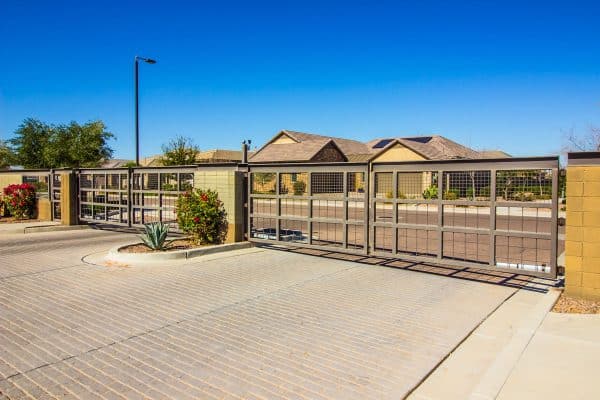Securing a tractor behind a private property means often means building a gate that’s wide enough to accommodate the vehicle. But what should be the width of your tractor gate? We researched the answer to this question for your convenience and here’s what we found.
The measurement for the space between gate posts to accommodate a tractor generally depends on the vehicle’s type. Some general tractor gate widths are:
- Utility tractors: 6.5 to 8 feet wide
- Riding lawn mowers: 6 to 7.25 feet wide
- Row crop tractors: 5.5 to 8 feet wide
- Orchard tractors: No less than 6.6 feet wide
- Industrial tractors: 9.2 to 14 feet wide
Keep in mind that some gates should also accommodate other vehicles, such as Bobcat skid-steer loaders and hay balers. Continue reading as we discuss these gate widths in greater detail. We’ll also tackle some standard farm gate sizes to help you in building a fixture with the correct dimensions.
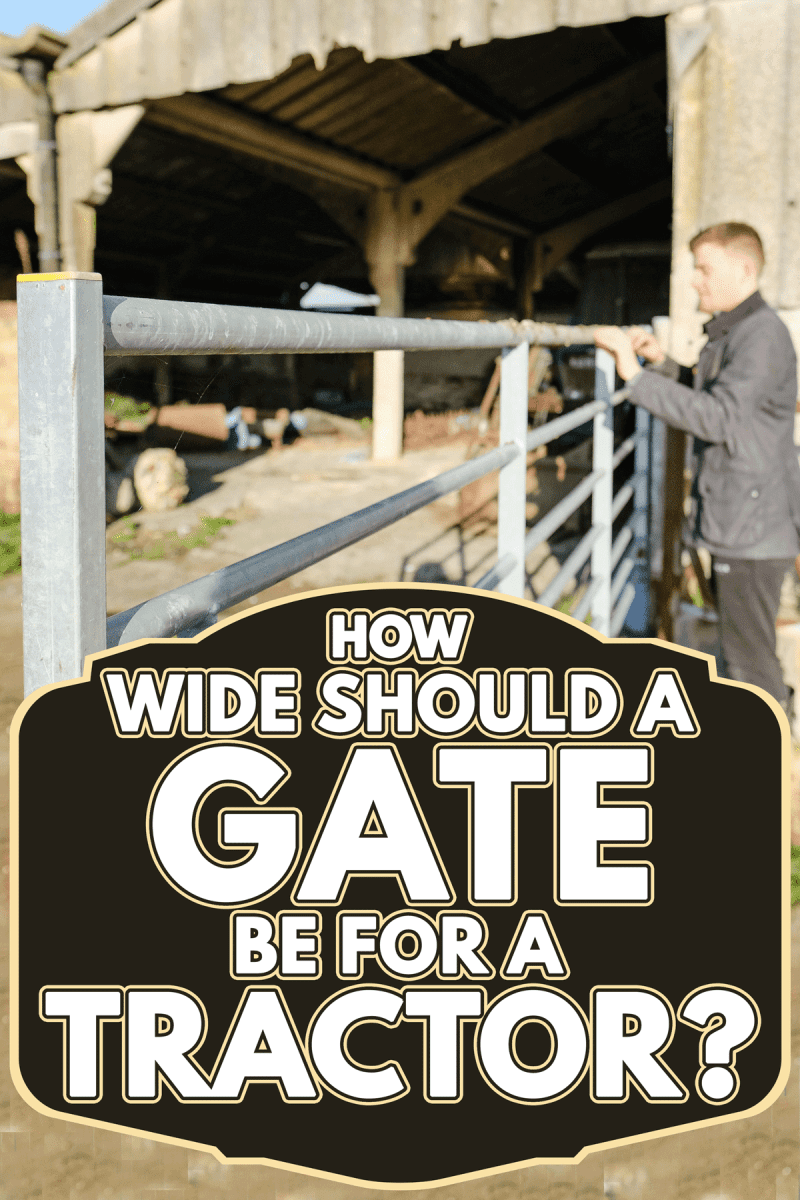
How Wide Does A Gate Need To Be For A Tractor?
The space between gate posts often depends on the width of the vehicle. A general rule of thumb is to have at least one foot of space on either side of the gate for the tractor to slide through the space between the posts.
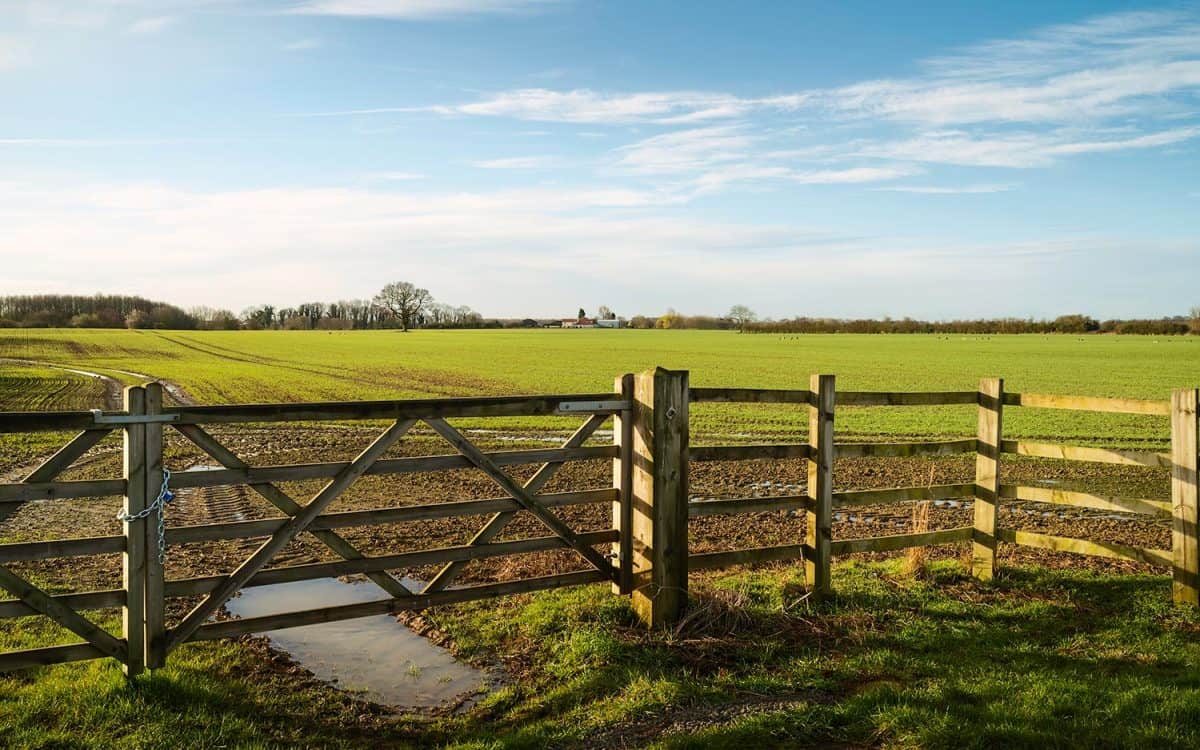
For example, the typical car width is about 5.4 to 9 feet. So the measurement of the gap between the gate’s posts should be at least 7.4 to 11 feet.
Looking at that concept, you should be able to gauge the space needed for a tractor based on its type. In this section, you’ll learn the different types of tractors and their average widths for you to know the appropriate width for your gate:
Utility Tractors
Also called farm tractors, these vehicles have widths that range from 4.5 to 6 feet. So a gate with a width of at least 6.5 to 8 feet should suffice for these tractors. Some examples of utility tractors include harvesters, tillers, and threshers.
Riding Lawn Mowers
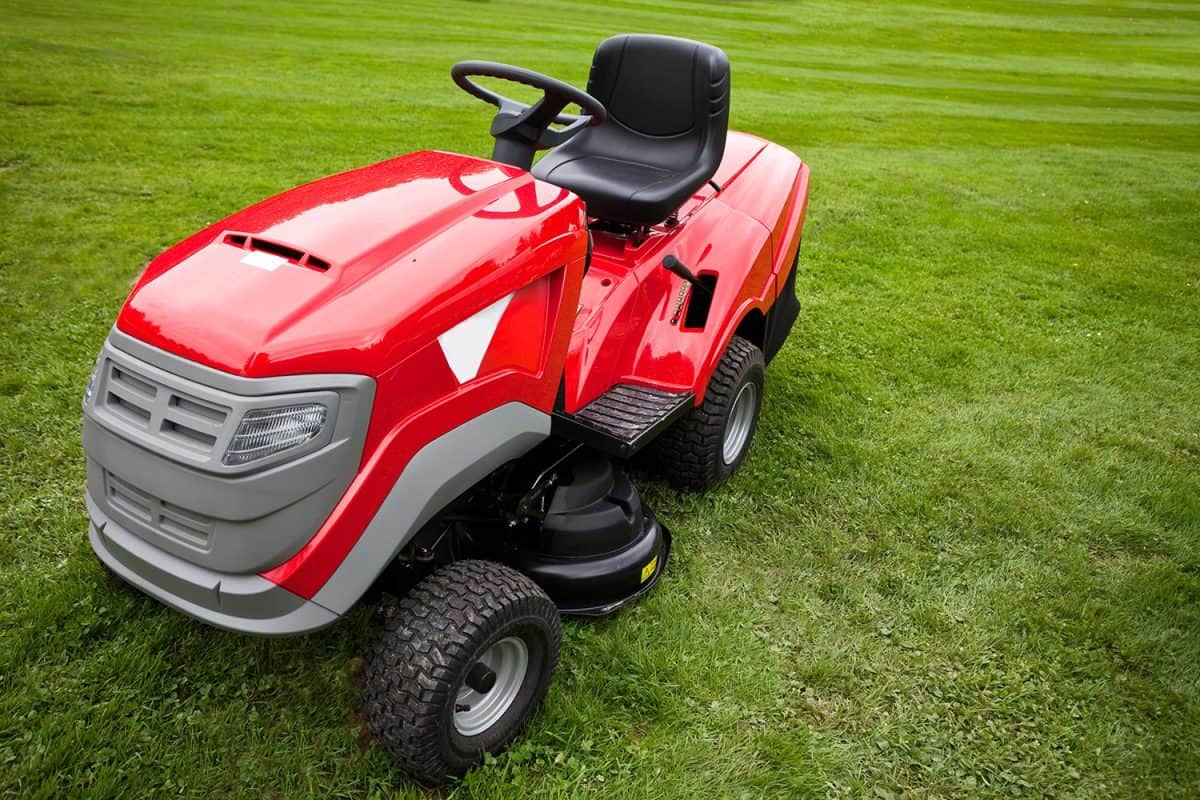
Another name for these vehicles is garden tractors, and they often have widths that go from 4 to 5.25 feet. If you’re planning to build a gate to fit these vehicles, make sure that the space between gate posts should be no less than 6 to 7.25 feet.
Row Crop Tractors
These tractors often have widths of about 3.5 to 6 feet. Take note that some models may have girths that exceed that 6-foot mark. So the space between the gate’s posts should be at least 5.5 to 8 feet (or more), depending on the model of row crop tractor you own.
Orchard Tractors
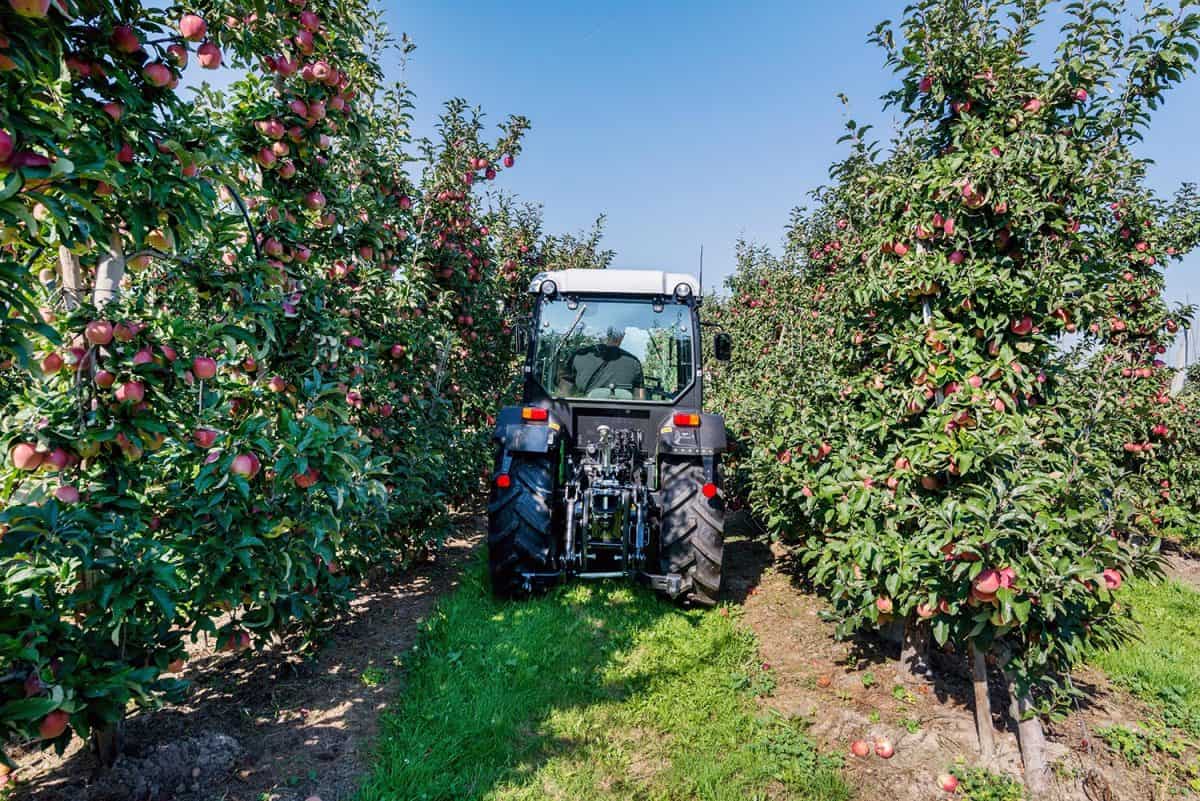
Orchard tractors often possess widths of about 4.6 feet. So, build a gate with a gap that's at least 6.6 feet to prevent this vehicle from banging or crashing against the fixture.
Industrial Tractors
Keep in mind that industrial tractors can be a separate class for these vehicles. It’s because other types of vehicles are under this category, including (but aren’t limited to) bulldozers, backhoes, and loaders.
Bulldozers often have an average width of 7.7 feet, which should demand at least 9.7-foot wide gates. As for backhoes, these vehicles have maximum widths that can go as much as 12 feet. So if you want to build a gate for a backhoe, ensure that the space between the posts should be no less than 14 feet.
On the other hand, loaders often have an typical width of at least 7.2 feet. The space between a gate’s posts should not go below 9.2 feet to accommodate these vehicles.
How Wide Should A Gate Be For A Bobcat/Skid-steer?
Take note that Bobcat skid-steer loaders have different models with widths ranging from 3 to 6 feet. So a gate needs to be at least 5 to 7 feet wide to provide sufficient space for these vehicles to pass through without encountering obstructions.
How Wide Should A Gate Be For A Hay Baler?
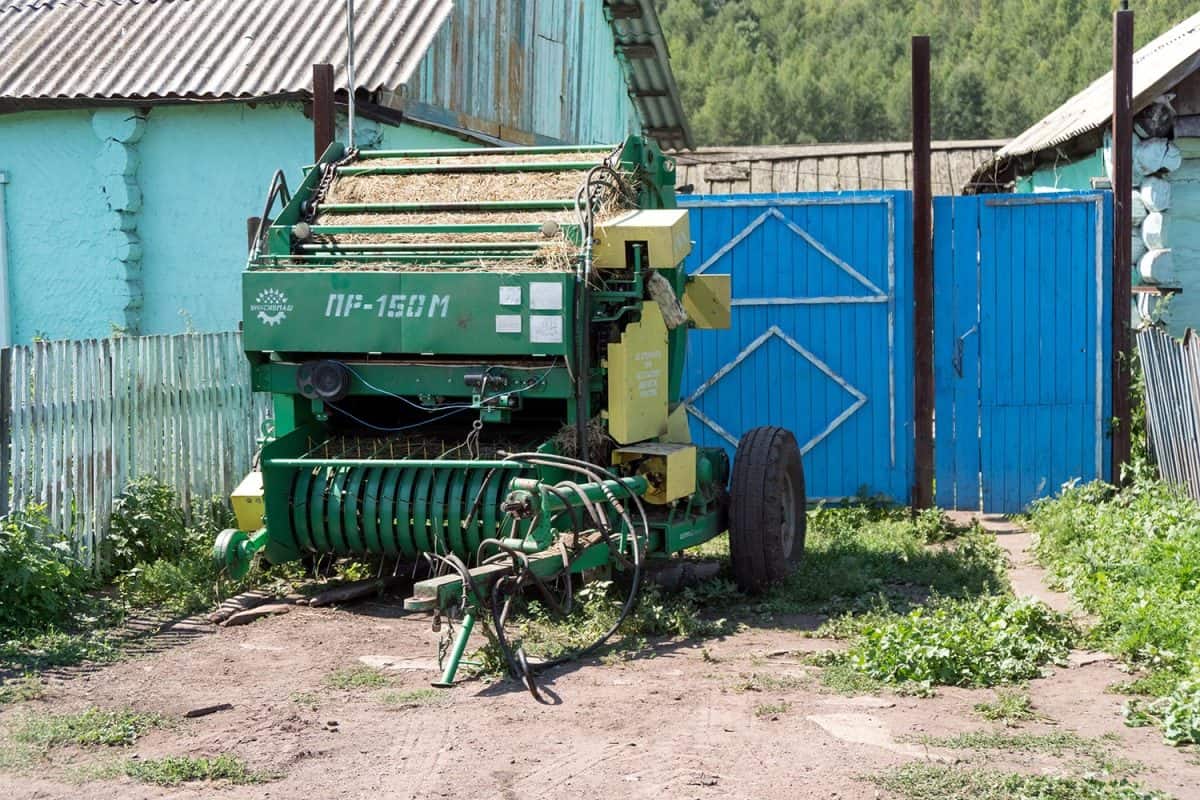
The size of a gate to fit a hay baler generally depends on that vehicle’s dimensions. Take note that hay balers can come in either small or large sizes. Small balers (also called mini round or roto-balers) are 1.7 to 2.3 feet wide. So a gate with a width of 3.7 to 4.3 feet should be adequate for these vehicles.
On the other hand, large hay balers typically have widths of about 5 feet. Make sure to have a gate with a width of at least 7 feet to provide appropriate access to these vehicles.
What Size Is A Standard Farm Gate?
The standard size for a farm gate’s opening is about 3 feet for standard entry purposes. However, the different types of farm gates also play a vital role in the measurements for each gap.
For instance, a swing gate is about 16 to 18 feet wide because it often needs to accommodate large vehicles. This kind of farm gate also needs to be taller than the typical pedestrian gate (which is about 5 feet).
As for metal farm gates, it can be quite challenging to put an exact number for the width of these models. The reason being is that metal gates for farms often come in a broad range of sizes. Still, a 5- or 6-foot opening should suffice to accommodate many farm vehicles.
How To Build A Metal Farm Gate?
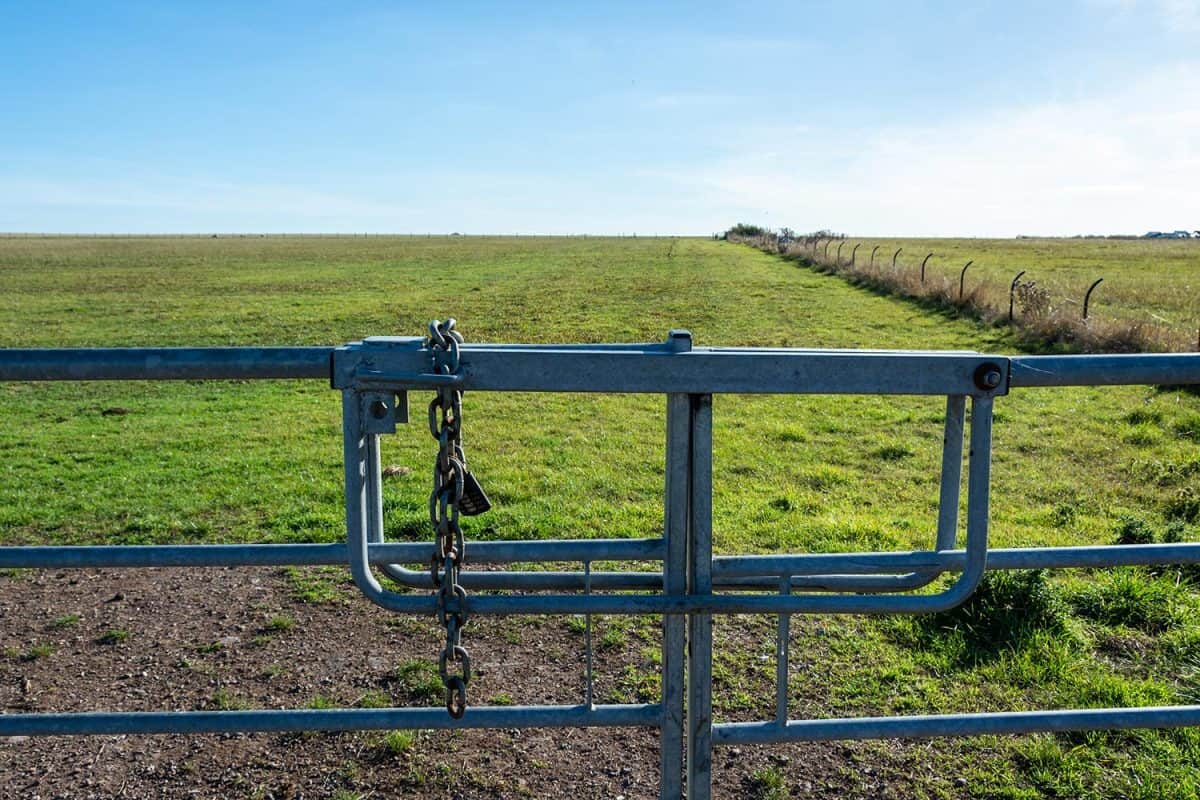
Take note that the following guide assumes that you already have the gate posts installed. If so, continue this task by following these steps:
What You’ll Need
- Suspension or tension wire
- Metal gate
- Wrenches
- Power drill
- Drill bits
- Lock
- Bolts and/or nuts
Step-by-Step Guide
- Pick up the metal gate and set it in the orientation that you want for it. You may need an assistant for this step, depending on the gate's size and weight.
- Install the suspension or tension wire assembly to the posts and attach it to the gate.
- Drill holes in the posts for the hooks. Then, install the gate's hooks into the newly drilled holes.
- Attach the metal gate to the hooks.
- Secure the gate using fasteners like nuts, bolts, and washers.
- Install the lock to prevent unwanted access to your property and stop the gate from moving on its own.
You may also need to use a level to ensure the gate is parallel to the ground. Otherwise, a portion of the gate will skid across the ground, potentially harming the fixture’s material or the driveway.
Check out this stainless steel suspension kit on Amazon.
You can also watch the video below for a visual guide on how to do this process. The person in the clip also tells about some modifications to the typical steps based on the project’s demands.
Can I Automate My Gates?
It’s possible to automate the opening and closing mechanisms of different gates with the help of gate openers. Interested buyers should take note of different factors to ensure they install the correct opener for their gates. Some of these elements to think about are:
- Opener type
- Power use
- Usage frequency
- Gate size and weight
- Extra features (e.g., loop detectors and other remote functions)
Check out this automatic swing gate opener set on Amazon.
Final Words
It’s important to pay attention to the width of the tractor to gauge the width of the opening of a gate. For example, a typical utility tractor should go through a 6.5- to 8-foot wide gate with relatively no issues.
If you like this post and would want to know more about similar topics, check out these relevant reads:
How Wide Should A Garden Gate Be?
Does Snow Fence Really Work? [With Proper Installation Tips]



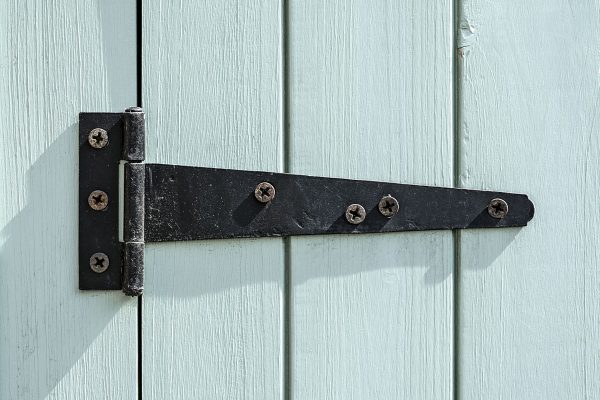
![A long black sliding metal gate for a private high end property, Can I Open My Gate With A Smartphone? [And How To]](https://fencefixation.com/wp-content/uploads/2022/05/Can-I-Open-My-Gate-With-A-Smartphone-And-How-To-600x400.png)
